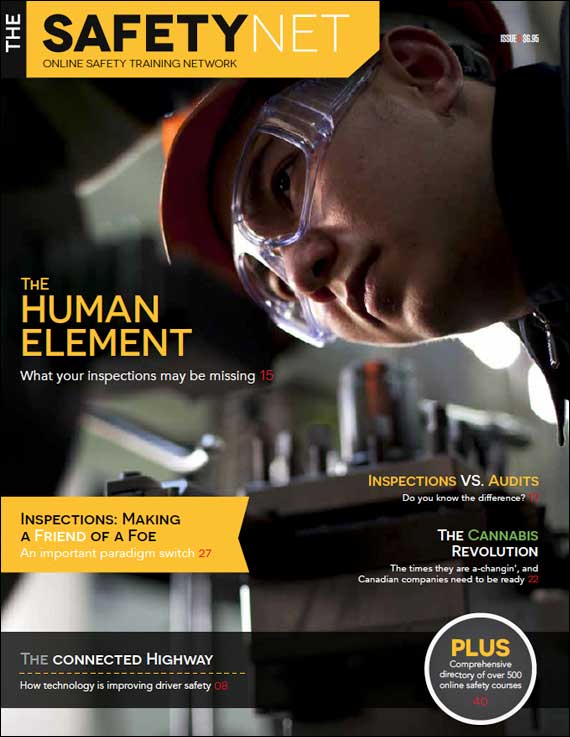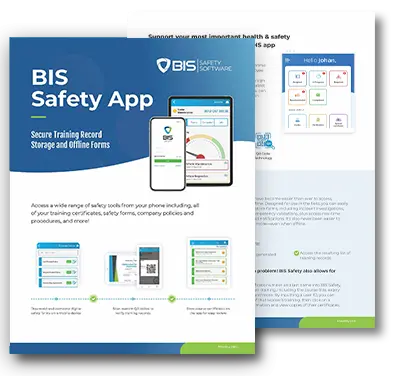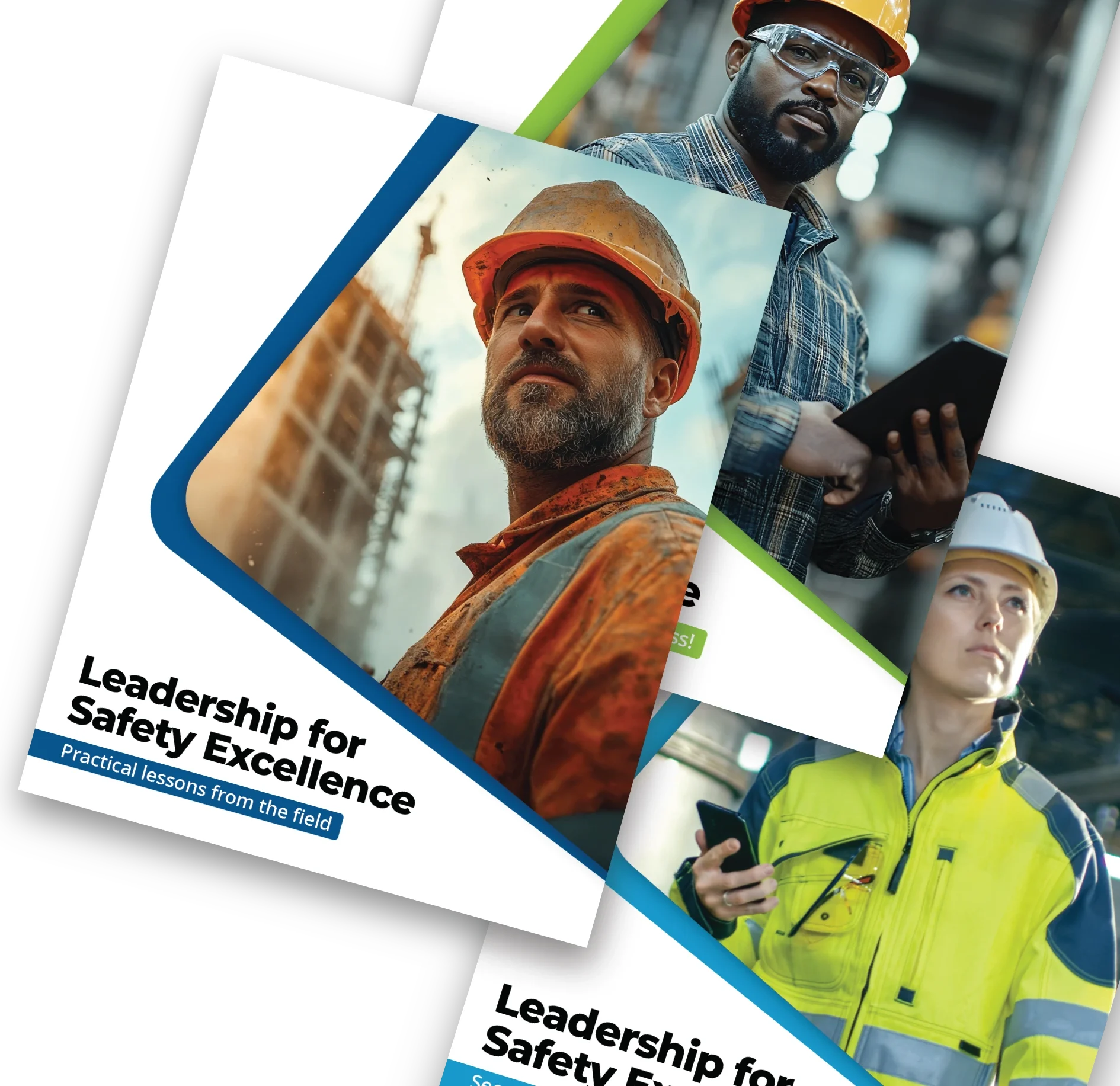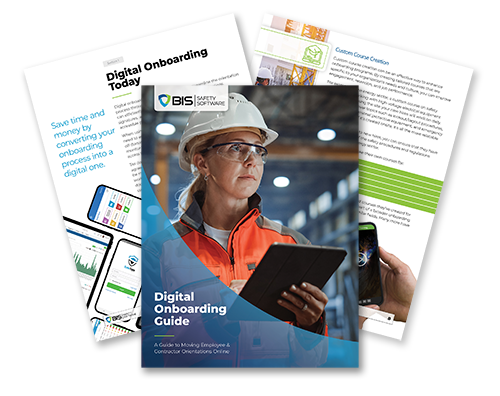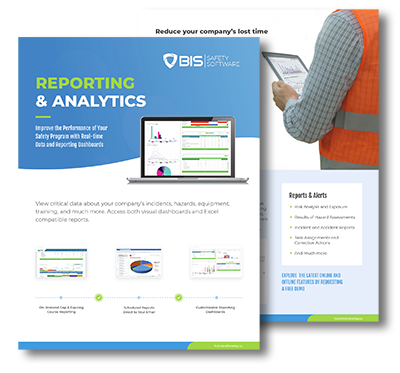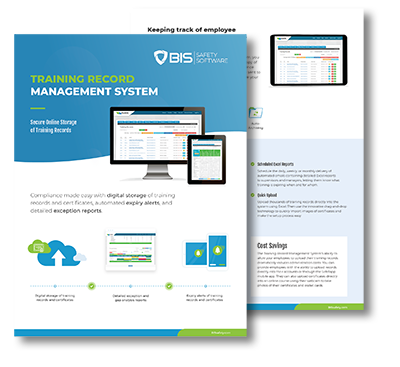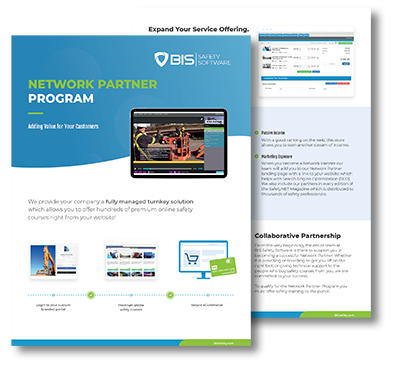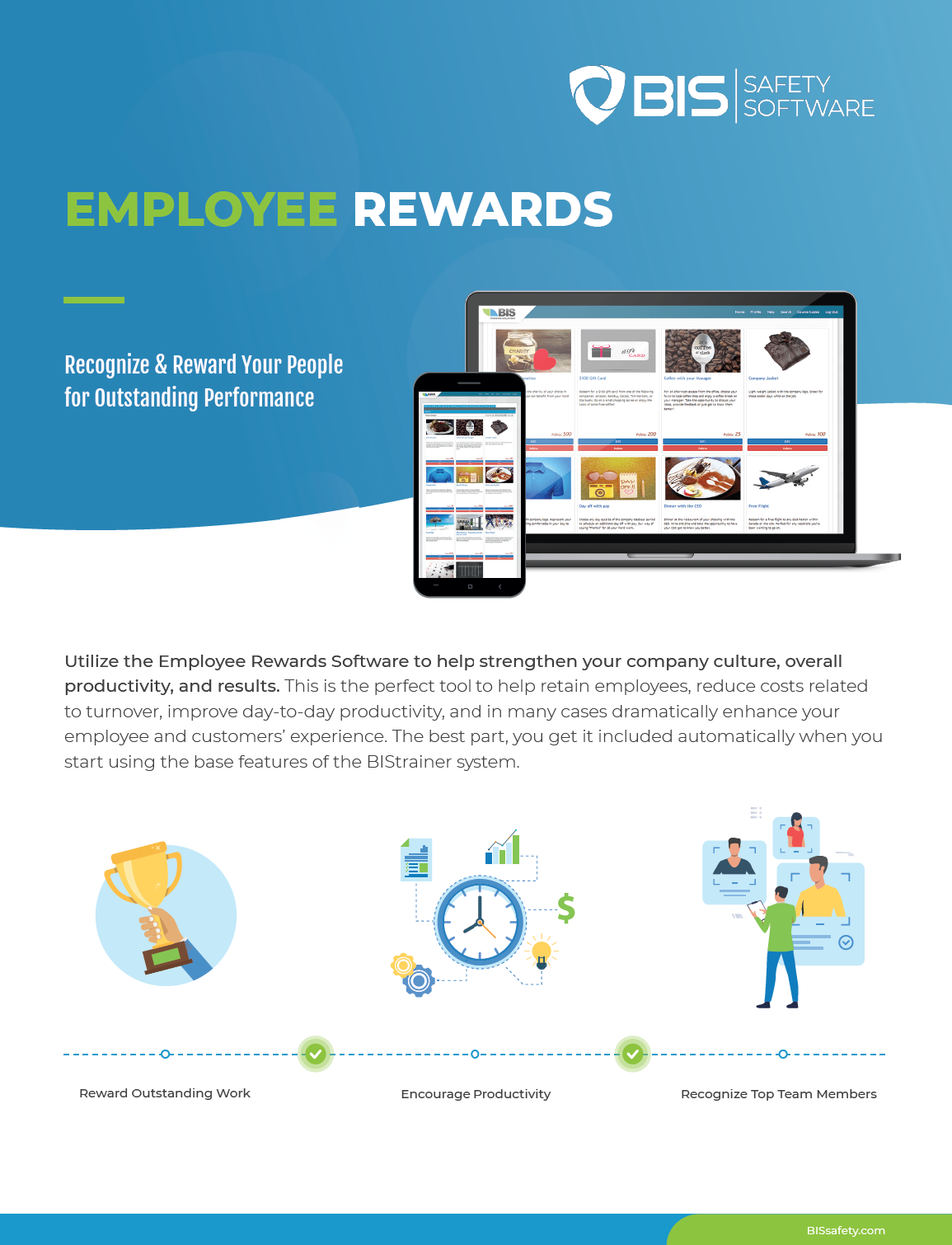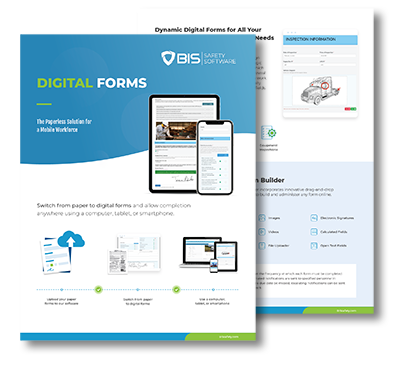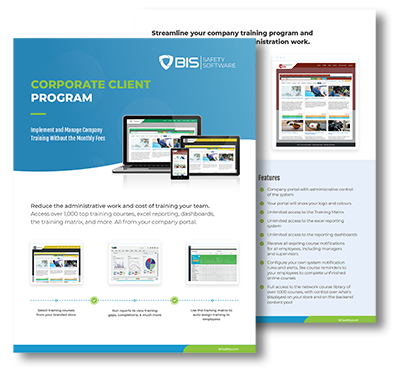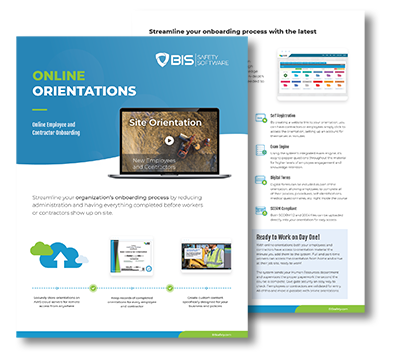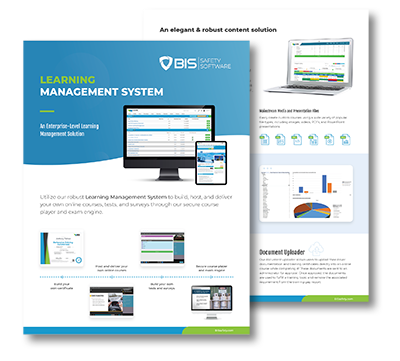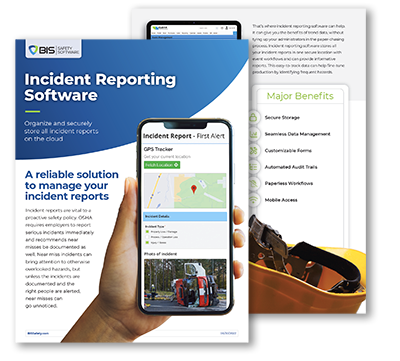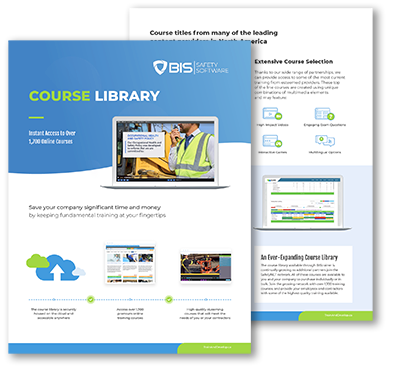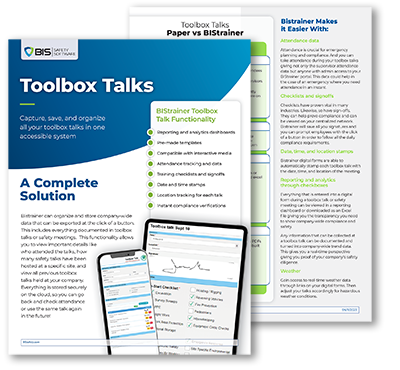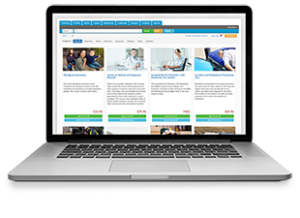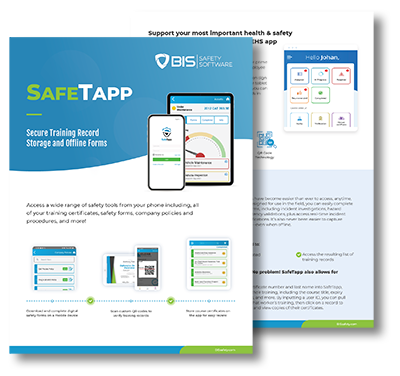Table Of Contents:
- Construction Risk Assessment Software Benefits Explained
- Understanding Construction Risk Assessment Software Solutions
- Evaluating the Benefits of Construction Risk Assessment Software
- Case Studies Highlighting Success With Risk Assessment Software
- Choosing the Right Construction Risk Assessment Software Solution
- Future Trends in Construction Risk Assessment Software Solutions
- Frequently Asked Questions About Construction Risk Assessment Software
- Conclusion
Construction Risk Assessment Software Benefits Explained
In construction, managing risks effectively is crucial for ensuring safety and project success. Construction risk assessment software solutions provide vital tools to identify, analyze, and mitigate hazards on-site. This article will explore the benefits of employing such software, including efficiency in risk management and enhanced compliance with safety regulations. Readers will gain insights into real-world applications through case studies and learn how to choose the right software to address their specific challenges. Ultimately, this content will empower construction safety managers to make informed decisions that improve operational safety and project outcomes.
Understanding Construction Risk Assessment Software Solutions

Construction risk assessment software is designed to enhance safety by systematically identifying and managing uncertainty in projects. Key advantages include improved compliance with the Occupational Safety and Health Administration standards, and leveraging data analytics for informed decision-making. These solutions facilitate collaboration and communication among stakeholders, empowering them to request a demo to explore how software can enhance their operational knowledge.
Defining Construction Risk Assessment Software
Construction risk assessment software serves as a vital tool for safety managers to systematically evaluate potential hazards within a project landscape. By utilizing a risk matrix, this software enables teams to prioritize risks based on their severity and likelihood, facilitating the development of effective strategies for mitigation. Safety managers can streamline their processes further by integrating data analytics, allowing for a more informed approach to risk management that enhances overall project safety.
Additionally, this software supports collaboration among stakeholders, ensuring that everyone involved can access critical safety information in real-time. As a result, teams can address hazards proactively, minimizing delays and avoiding costly mistakes. Those interested in elevating their safety protocols are encouraged to book a demo, offering them a firsthand experience of how these advanced features can significantly transform their safety management efforts.
Key Advantages of Implementing This Software
The implementation of construction risk assessment software significantly enhances the inspection and audit processes. This software empowers organizations to establish a structured workflow that addresses safety concerns efficiently. By utilizing real-time data analytics, safety managers can identify patterns and trends in hazards, improving the ability to develop proactive strategies that minimize risks on job sites.
Moreover, these solutions foster better organization by centralizing safety documentation and communication among team members. When stakeholders have immediate access to safety updates and necessary resources, the chances of oversight decrease dramatically. This streamlined approach not only ensures compliance with standards but also leads to a stronger safety culture within the organization, ultimately driving project success and reducing costs associated with safety incidents.
How Software Solutions Mitigate Risk in Construction Projects
Construction risk assessment software plays a crucial role in mitigating operational risk by providing enhanced visibility into potential hazards on job sites. With real-time data and risk assessment tools, safety managers can identify injury risks early, allowing teams to implement effective safety measures before accidents occur. Customer stories highlight how adopting this software has led to significant reductions in incidents, showcasing the practical benefits of a proactive approach to risk management.
Furthermore, these software solutions facilitate better communication among stakeholders, ensuring that everyone is aware of identified risks and necessary precautions. This transparency minimizes the likelihood of oversights that can lead to injuries and costly project delays. By leveraging data from previous projects, organizations can continuously refine their risk assessment processes, promoting a smarter, safer work environment that drives overall project success.
The Role of Data Analytics in Risk Management
Data analytics plays a pivotal role in construction risk management by providing actionable insights that enhance overall project governance. By analyzing past project data, safety managers can identify trends related to subcontractor performance and safety incidents, directing their attention toward high-risk areas. This analytical approach helps organizations mitigate financial risk by proactively addressing potential hazards before they escalate into costly issues.
Furthermore, the integration of data analytics in risk assessments enables teams to formulate refined strategies tailored to their specific project environments. With real-time analytics, safety managers can monitor evolving risks continuously, ensuring that necessary precautions are implemented timely. This proactive stance not only strengthens safety protocols but also fosters a culture of safety awareness across the organization, significantly reducing the likelihood of incidents on job sites.
Enhancing Collaboration and Communication Among Stakeholders
Effective communication is critical in construction projects, and risk management software enhances collaboration among stakeholders by centralizing safety information. By utilizing features such as real-time updates and interactive dashboards, teams can easily share insights regarding potential hazards and mitigation strategies. This open communication not only fosters a culture of safety but also enables smoother coordination, ultimately leading to increased productivity on-site.
Utilizing root cause analysis within risk management software allows teams to identify underlying issues that may lead to unsafe conditions. By addressing these root causes collaboratively, stakeholders can implement targeted solutions that minimize risk and improve the overall work environment. Engaging all parties in this proactive approach ensures everyone remains informed and accountable, reducing the likelihood of incidents that can generate additional heat and stress in the workplace.
With the basics of construction risk assessment software laid out, it is time to look deeper. The benefits of using such software can change the way safety managers approach their work, making every decision clearer and more confident.
Evaluating the Benefits of Construction Risk Assessment Software
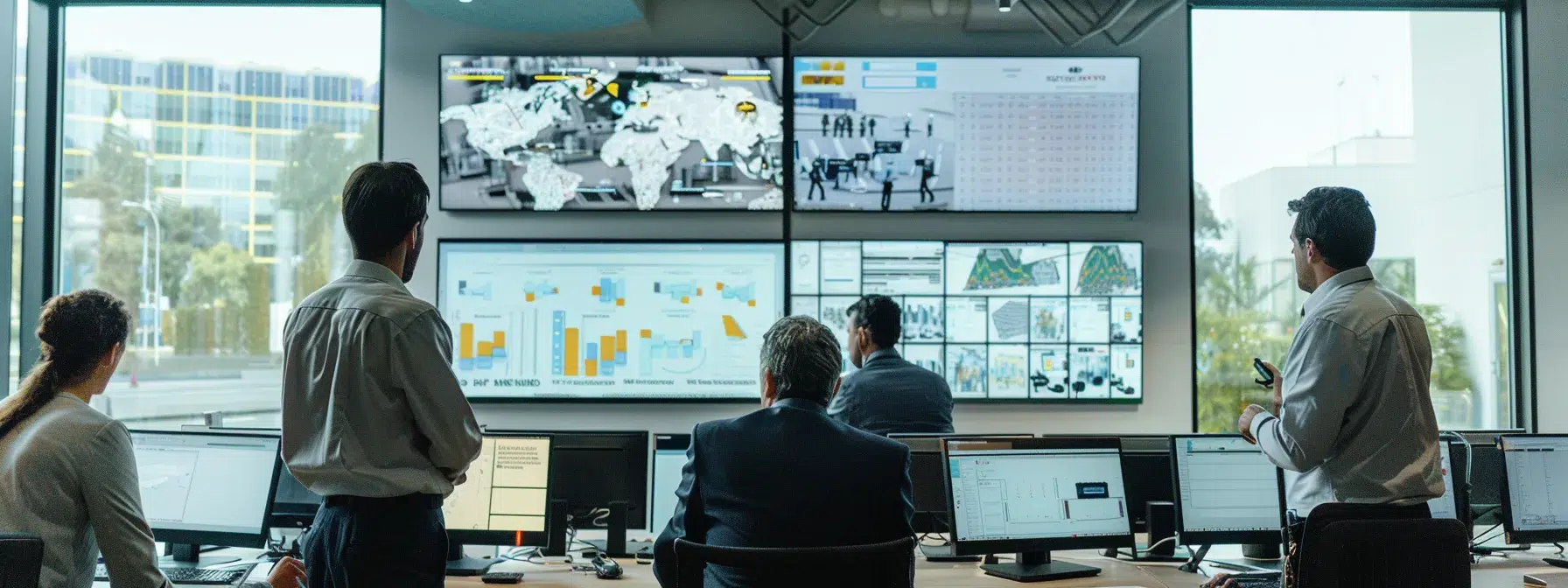
Construction risk assessment software enhances decision-making through real-time insights, allowing safety managers to evaluate risk probability effectively. It streamlines compliance and regulatory management while driving cost savings and resource efficiency. These tools also help teams adapt to changes and emerging challenges, ultimately fostering a safety-focused culture that promotes clear communication and effective risk mitigation across all project stakeholders.
Improved Decision-Making Through Real-Time Insights
Real-time insights from construction risk assessment software significantly enhance decision-making, allowing stakeholders to quickly evaluate risks associated with concrete work and contract obligations. By providing immediate access to critical data, safety managers can address potential hazards before they escalate into serious issues, ensuring that projects remain on track and within budget. This proactive approach not only aids compliance with industry regulations but also strengthens relationships with partners and contractors throughout the supply chain.
The ability to analyze data in real-time equips safety managers with the necessary tools to make informed decisions about resource allocation and risk management strategies. For instance, when an unexpected issue arises, the software allows teams to assess the impact on the project timeline and negotiate contract terms more effectively. Consequently, safety managers can maintain a clear focus on safety, optimize project execution, and ultimately drive successful outcomes for all stakeholders involved.
Streamlining Compliance and Regulatory Management
Construction risk assessment software significantly aids organizations in streamlining compliance with industry regulations, including proper management of personal protective equipment (PPE). By centralizing safety documentation and ensuring that teams have quick access to compliance requirements, safety managers can verify adherence to OSHA standards and other regulations efficiently. This not only reduces the potential for penalties but also enhances overall site safety by ensuring workers are equipped with the right PPE at all times.
Moreover, real-time monitoring capabilities allow safety managers to track the effective use of PPE on-site continuously. Should any discrepancies arise, such as a worker not using required protective gear, the software can alert managers instantly. By addressing these issues quickly, teams foster a culture of safety while maintaining compliance, ultimately leading to a more secure working environment and reducing risks associated with non-compliance.
Cost Savings and Resource Efficiency
Investing in construction risk assessment software can lead to substantial cost savings for organizations. By identifying potential hazards early in the project lifecycle, safety managers can implement proactive measures that prevent accidents, which in turn reduces costs associated with workplace injuries and regulatory fines. For example, a construction firm that adopted such software reported a significant decrease in incidents, translating into both saved resources and a stronger reputation within the industry.
Resource efficiency is enhanced through streamlined processes and centralized documentation. With construction risk assessment software, safety managers can ensure that equipment and personnel comply with safety standards without the need for extensive manual checks. This improvement reduces unnecessary spending on compliance-related penalties and fosters a more efficient allocation of resources, allowing teams to focus on project execution and safety rather than managing deficiencies.
Adapting to Changes and Emerging Challenges
Adapting to changes and emerging challenges in construction is crucial for maintaining safety and efficiency on job sites. Construction risk assessment software empowers safety managers to respond swiftly to new regulations, unexpected hazards, or shifts in project scope. With real-time insights, teams can adjust their strategies dynamically, ensuring that safety protocols align with evolving project demands.
Additionally, these software solutions facilitate the identification and management of risks associated with new technologies or construction methods. By analyzing data trends and performance metrics, safety managers can proactively address potential challenges, thus minimizing disruptions. This adaptability not only enhances project resilience but also fosters a proactive safety culture within the organization.
Building a Safety-Focused Culture
Building a safety-focused culture within an organization is essential for enhancing overall project outcomes, and construction risk assessment software plays a critical role in this endeavor. By fostering an environment where safety is prioritized, teams can prevent incidents and improve compliance with regulations. Safety managers can utilize data insights from the software to engage employees in safety training, ensuring that every team member understands their responsibilities and the importance of adhering to safety protocols.
Moreover, when safety becomes an integral part of the workplace culture, it promotes collaboration and accountability among all stakeholders. Construction risk assessment software enables effective communication about safety practices, allowing team members to share insights and identify risks collectively. This proactive approach not only strengthens relationships within the team but also leads to a more efficient management of safety measures, ultimately creating a safer work environment for everyone involved.
Risk assessment software delivers real results in the field. Now, let’s look at case studies that show how teams have achieved success using this vital tool.
Case Studies Highlighting Success With Risk Assessment Software

This section presents valuable insights through case studies demonstrating the successful implementation of construction risk assessment software in large-scale projects. It highlights lessons learned from diverse industries, user feedback on software effectiveness, and quantifiable metrics that showcase improved outcomes. Additionally, the discussion will explore the long-term benefits observed, providing a comprehensive view of how risk assessment software enhances safety management in construction.
Successful Implementation in Large-Scale Projects
In large-scale construction projects, effective implementation of risk assessment software can transform safety management processes. For instance, a major infrastructure firm utilized this software to address safety concerns on a high-profile project, resulting in a notable reduction in incidents. Teams could identify risks early and streamline compliance efforts, ensuring that all safety protocols were adhered to consistently throughout the project.
Additionally, another construction company highlighted success by employing risk assessment software to manage multiple large sites simultaneously. By centralizing data, safety managers enhanced communication among teams, which facilitated timely updates and proactive hazard responses. The improved visibility into site conditions not only led to increased safety compliance but also contributed to significant cost savings by minimizing delays and accidents across the projects.
Lessons Learned From Various Industries
Various industries have provided valuable lessons regarding the implementation of construction risk assessment software, showcasing its impact on safety and efficiency. For example, the manufacturing sector has successfully employed similar software to analyze incident reports and enhance hazard communication, demonstrating how centralized data management can lead to improved compliance and proactive risk alleviation strategies. This approach emphasizes the significant role of data-driven insights in identifying potential issues before they escalate into serious concerns.
An example from the oil and gas industry highlights how integrating construction risk assessment software can facilitate better collaboration among teams. By sharing real-time safety information and incident trends across multiple sites, organizations were able to standardize safety protocols, leading to a decrease in workplace injuries. These cross-industry insights underscore the importance of communication and data utilization in fostering a safer work environment, which is essential for project success in construction.
User Feedback on Software Effectiveness
User feedback on construction risk assessment software often highlights its transformative impact on safety management protocols. Safety managers report enhanced visibility into project risks, which allows for immediate adjustments and proactive measures that ultimately reduce unwanted incidents. This feedback, backed by data-driven results, illustrates how this software not only improves compliance but also fosters a culture of accountability within teams.
Metrics Demonstrating Improved Outcomes
Metrics from organizations utilizing construction risk assessment software consistently show significant improvements in project outcomes. For instance, a construction firm reported a 30% reduction in incident rates within the first year of implementation, showcasing how real-time monitoring and risk assessment can lead to safer job sites. Such quantifiable results illustrate how effectively these software solutions enhance safety management and foster a proactive culture among teams.
Furthermore, the data analysis capabilities of risk assessment software have helped organizations save costs by preventing workplace injuries and avoiding regulatory penalties. One case study indicated a 25% decrease in compliance-related fines after adopting digital safety management tools, highlighting their role in streamlining compliance processes. These metrics not only reflect enhanced safety performance but also demonstrate the software’s value in driving overall operational efficiency in construction projects.
Long-Term Benefits Observed
The long-term benefits observed from implementing construction risk assessment software significantly impact safety management and operational efficiency. Organizations that have integrated this software often report sustained reductions in incident rates, cultivating a safer work environment over time. By consistently applying data analytics tools, safety managers can refine their strategies, ensuring that safety protocols adapt to evolving project conditions and regulatory requirements.
Success stories reveal the power of risk assessment software. Now, it’s time to find the right solution for your construction needs.
Choosing the Right Construction Risk Assessment Software Solution

When selecting construction risk assessment software, key features should include robust data analytics, effective communication tools, and customization options to fit unique project needs. Assessing vendor reputation and support is critical, as well as understanding budget considerations to ensure a positive return on investment. Additionally, seamless integration with existing systems can enhance overall functionality and user experience, setting the stage for successful safety management.
Key Features to Consider in Software Selection
When selecting construction risk assessment software, safety managers should prioritize robust data analytics capabilities that allow for the real-time identification of potential hazards. These features enable organizations to monitor risk factors closely and make informed decisions quickly, minimizing the likelihood of incidents on job sites. By utilizing data-driven insights, safety managers can pinpoint trends and adjust strategies proactively, ensuring that safety protocols align with evolving project needs.
Effective communication tools within the software are also essential, as they facilitate collaboration among team members and stakeholders. Features such as interactive dashboards and real-time updates ensure that everyone involved has access to critical safety information, improving overall situational awareness. This centralized communication streamlines responses to identified risks, reducing the chances of oversight and enhancing overall project outcomes.
Assessing Vendor Reputation and Support
Evaluating the vendor’s reputation is critical when choosing construction risk assessment software. Safety managers should look for providers with a proven track record in the industry, as positive testimonials and case studies reflecting their ability to enhance safety protocols can indicate reliability. Engaging with existing users through professional forums or industry networks can yield insights that reveal the vendor’s credibility and support level, ultimately guiding safety managers toward a well-informed decision.
Support services offered by the vendor also play a vital role in ensuring effective software implementation. A responsive support team can assist safety managers during the onboarding process, addressing initial challenges and providing training resources that heighten user satisfaction. By opting for software solutions with dedicated customer service, safety managers can ensure timely assistance, fostering a smoother transition and enabling teams to leverage the full capabilities of the risk assessment software effectively.
Customization Options for Unique Project Needs
Customization plays a pivotal role in the effectiveness of construction risk assessment software, as it allows safety managers to tailor tools and features according to the specific needs of their projects. For instance, by adapting workflows and reporting formats, organizations can ensure that the software aligns seamlessly with their unique operational processes and safety protocols. This flexibility enhances user experience and promotes higher adoption rates among team members who can relate the software functionalities to their daily tasks.
Moreover, incorporating customization options enables teams to address specific compliance requirements and project challenges effectively. By designing forms or checklists that align with industry standards, safety managers can streamline data collection and ensure that all critical safety aspects are monitored consistently. This targeted approach not only improves the overall efficiency of the risk assessment process but also enhances safety outcomes, making it easier to identify and mitigate risks before they escalate into serious issues.
Budget Considerations and Return on Investment
Budget considerations play a critical role when selecting construction risk assessment software. Organizations must evaluate not only the initial cost of purchase but also the long-term savings associated with improved safety protocols. By investing in a solution that enhances compliance and reduces incident rates, companies can realize a significant return on investment, ultimately leading to lower insurance premiums and fewer costs related to workplace injuries.
Moreover, assessing the overall value of the software involves considering efficiency gains and resource optimization. For example, streamlined processes can reduce labor hours spent on manual compliance checks and documentation management. By embracing a comprehensive risk assessment tool, safety managers enable their teams to allocate resources more effectively, resulting in both immediate and sustained financial benefits over the project’s lifecycle.
Integrating With Existing Systems
Integrating construction risk assessment software with existing systems is essential for maximizing its effectiveness and improving overall workflow. When safety managers select software solutions, they should prioritize options that seamlessly connect with current project management tools and data repositories. This integration enables real-time information sharing and enhances the visibility of safety metrics, allowing teams to respond promptly to emerging risks while minimizing disruptions in their regular operations.
Moreover, an effective integration process ensures that organizations can maintain continuity and leverage historical data without starting from scratch. For instance, connecting risk assessment software with tools such as scheduling or financial applications can provide comprehensive insights, helping safety managers make informed decisions based on past performance. This holistic approach not only streamlines compliance efforts but also strengthens the overall safety culture within the organization, ultimately driving project success.
Choosing the right software now sets the stage for what’s ahead. The horizon holds new trends that promise to change the landscape of construction risk assessment.
Future Trends in Construction Risk Assessment Software Solutions

Advancements in artificial intelligence and machine learning are revolutionizing construction risk assessment software, enabling more accurate hazard predictions and tailored solutions. The integration of IoT enhances real-time risk management by providing critical data from connected devices. Innovations in user experience and interface design streamline workflows, while evolving compliance standards require adaptable software capabilities. Predictions suggest that industry adoption will continue to grow, driven by these transformative trends.
Advancements in Artificial Intelligence and Machine Learning
Advancements in artificial intelligence (AI) and machine learning are reshaping construction risk assessment software by enhancing predictive capabilities related to site hazards. These technologies analyze historical project data to identify patterns and trends, allowing safety managers to anticipate potential risks before they escalate. For instance, AI can flag anomalies in worker behavior or environmental factors that may indicate emerging hazards, enabling proactive safety interventions.
Furthermore, machine learning algorithms adapt over time, refining risk assessment models based on input from ongoing projects. This continuous learning process improves the accuracy of risk evaluations, allowing teams to make informed decisions swiftly. By incorporating AI and machine learning into risk management practices, organizations can significantly reduce incident rates, improve compliance, and foster a safer work environment that addresses the evolving needs of the construction industry.
The Impact of IoT on Risk Management
The Internet of Things (IoT) significantly enhances construction risk management by enabling real-time monitoring of job site conditions. With connected devices such as wearables and sensors, safety managers can gather critical data on worker behavior and environmental factors, allowing for immediate identification of potential risks. This proactive data collection not only improves hazard detection but also facilitates timely interventions that safeguard personnel and reduce incident rates.
Furthermore, IoT integration allows for seamless data flow between various stakeholders, ensuring that crucial safety information is accessible at all times. For instance, when equipment malfunctions or safety protocols are breached, instant notifications can be sent to relevant team members, minimizing response times and preventing accidents. As IoT technology continues to evolve, its impact on risk management will likely expand, driving robustness and efficiency in construction safety practices.
Innovations in User Experience and Interface Design
Innovations in user experience and interface design are pivotal in optimizing construction risk assessment software, making it more accessible and efficient for safety managers. By focusing on intuitive navigation and user-friendly layouts, these advancements facilitate quicker onboarding and minimize the learning curve for new users. When safety teams have the ability to interact seamlessly with the software, they can respond to potential hazards more effectively and maintain a proactive safety culture.
Moreover, responsive design tailored for mobile devices allows safety managers to perform assessments and access critical safety information directly from the field. This immediate access empowers teams to communicate real-time updates and alerts, substantially enhancing situational awareness. Ultimately, these innovations help ensure that all stakeholders remain informed and engaged, which is essential in driving safety compliance and creating a safer construction environment.
Evolution of Compliance Standards and Software Capabilities
The evolution of compliance standards within the construction industry has led to a significant transformation in software capabilities. As regulations become more stringent and complex, construction risk assessment software must adapt to ensure organizations meet these requirements efficiently. For example, the increasing emphasis on data transparency and environmental regulations demands that software solutions include robust tracking and reporting features, enabling safety managers to demonstrate compliance at all times.
Moreover, as safety protocols advance, software capabilities will continue to evolve, integrating innovative technologies like artificial intelligence and machine learning. These advancements will allow for dynamic updates to compliance standards within the software, ensuring that safety managers can quickly adapt to regulatory changes without extensive manual intervention. This continuous evolution enhances operational efficiency and fosters a stronger commitment to safety across all construction projects, directly addressing the need for effective risk management tools in a complex regulatory landscape.
Predictions for Industry Adoption and Growth
The construction industry is poised for increased adoption of risk assessment software as organizations recognize its critical role in enhancing safety and operational efficiency. With a growing emphasis on compliance and proactive risk management, companies are likely to invest in these digital solutions to meet evolving regulatory demands. The ability to leverage real-time data and analytics will empower safety managers to identify potential hazards rapidly, aligning with broader trends toward technology integration in construction practices.
As safety protocols become more sophisticated, the enhancement of construction risk assessment software capabilities will drive industry growth. Organizations will seek solutions that incorporate artificial intelligence and data analytics, enabling them to refine their risk management strategies continuously. This shift toward more advanced, data-driven tools will not only improve compliance but also foster a culture of safety awareness, ultimately leading to greater workforce protection and project success.
As construction risk assessment software evolves, many questions arise. The next section addresses common queries, providing clarity for managers navigating this landscape.
Frequently Asked Questions About Construction Risk Assessment Software

Understanding the necessity of construction risk assessment software involves exploring its essential role in enhancing project safety, addressing industry challenges, and improving operational efficiency. This section elucidates what makes such software vital, outlines implementation expectations, and discusses the necessary training for effective use. It also offers insights into measuring the software’s success, providing valuable guidance for safety managers seeking to elevate their safety management practices.
What Makes This Software Essential for Construction Projects?
Construction risk assessment software is essential for projects as it systematically identifies and evaluates potential hazards, enabling safety managers to create effective mitigation strategies. By leveraging real-time data analytics, this software helps teams proactively address risks, ensuring compliance with safety regulations and reducing the likelihood of accidents on job sites. For example, a construction company using such software can identify trends in incident reports, allowing them to implement targeted safety measures that significantly lower risk levels.
Moreover, the software enhances communication among all stakeholders involved in a construction project. With centralized access to safety information and real-time updates, team members can quickly respond to identified hazards, fostering a culture of safety awareness. This collaborative approach not only streamlines workflows but also promotes accountability, ensuring that everyone remains engaged in maintaining safe working conditions throughout the project’s lifecycle.
How Does Software Address Common Industry Challenges?
Construction risk assessment software effectively addresses common industry challenges by providing safety managers with the tools required to identify and evaluate potential hazards quickly. By utilizing real-time data analytics, this software allows teams to stay agile, adjusting safety protocols according to emerging threats. For instance, if a new hazard is detected during a routine inspection, the software can immediately alert stakeholders, ensuring rapid response to mitigate any risks, thereby enhancing overall site safety.
Moreover, the software centralizes critical safety documentation, making it easily accessible to all project stakeholders. This streamlined communication reduces the chances of miscommunication or oversight, which are frequent challenges in construction projects. When every team member can access up-to-date safety information, they are better equipped to adhere to compliance requirements and ensure a safer working environment, ultimately leading to successful project outcomes.
What Can Be Expected During Implementation?
During the implementation of construction risk assessment software, organizations can anticipate a structured onboarding process guided by the vendor’s support team. This phase typically involves initial training sessions tailored to the specific needs of safety managers and team members, ensuring everyone is proficient in utilizing the software effectively to enhance risk management strategies. Moreover, clear communication between the vendor and the organization is crucial, as it sets expectations regarding timelines and necessary resources for a smooth transition.
As teams begin integrating the software into their existing workflows, they will likely experience a learning curve that allows them to adapt their safety protocols around the capabilities of the new tool. This phase often reveals insights into outdated processes, prompting safety managers to refine their risk assessment methods based on real-time data analytics. By actively engaging with the software, organizations can start to see immediate benefits, such as improved compliance tracking and more transparent communication among stakeholders, which ultimately support the goal of enhancing overall project safety.
What Training Is Required for Effective Usage?
Effective usage of construction risk assessment software begins with comprehensive training tailored to the specific needs of the organization. Safety managers and team members should participate in hands-on workshops that cover software functionalities, data analytics, and reporting features. By familiarizing themselves with the software’s capabilities, users can enhance their ability to identify and manage risks efficiently, ultimately improving safety outcomes on job sites.
Moreover, ongoing training and support are essential to ensure that users stay updated with the latest software enhancements and industry changes. Regular refresher courses can help safety managers adapt their strategies based on real-time data and maintain compliance with evolving regulations. This continuous learning approach not only maximizes the benefits of the software but also fosters a culture of safety awareness, where all team members contribute to safer work environments.
How to Measure the Success of Implementing This Software?
Measuring the success of implementing construction risk assessment software involves evaluating specific performance metrics that align with safety management objectives. Organizations can track reductions in incident rates and compliance-related fines as indicators of improved safety outcomes and adherence to regulations. By comparing these metrics before and after software adoption, safety managers can determine the extent to which the software has enhanced overall project safety and operational efficiency.
Moreover, feedback from team members regarding software usability and effectiveness also plays a key role in assessing success. Conducting regular surveys can provide insights into user satisfaction and areas for improvement, ensuring that the software meets the evolving needs of safety managers. By combining quantitative data with qualitative feedback, organizations can gain a comprehensive understanding of the impact of construction risk assessment software on their safety culture and project performance.
Conclusion
Construction risk assessment software is essential for enhancing safety management within the industry. By systematically identifying hazards and promoting real-time communication among stakeholders, it empowers safety managers to make informed decisions and implement effective mitigation strategies. The integration of data analytics further boosts compliance and operational efficiency, leading to reduced incidents and costs. Embracing this technology fosters a proactive safety culture, ultimately ensuring safer and more successful construction projects.


